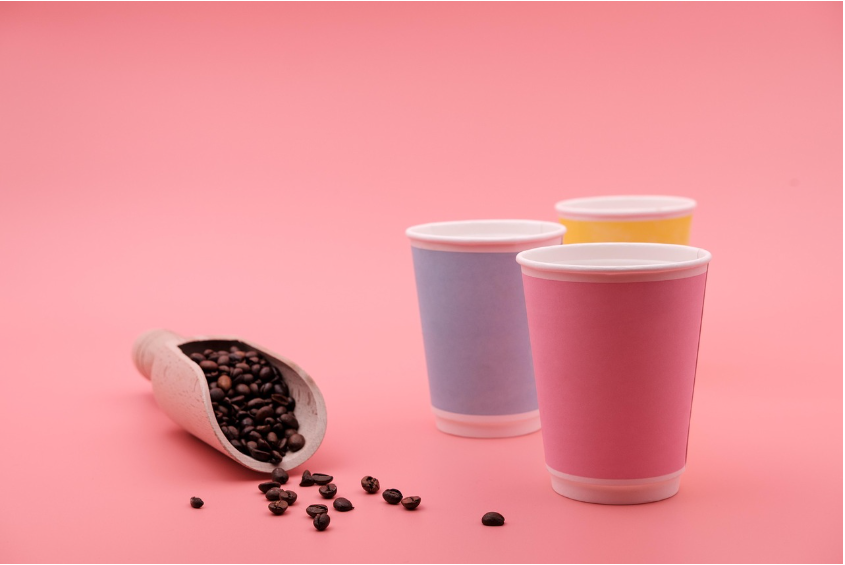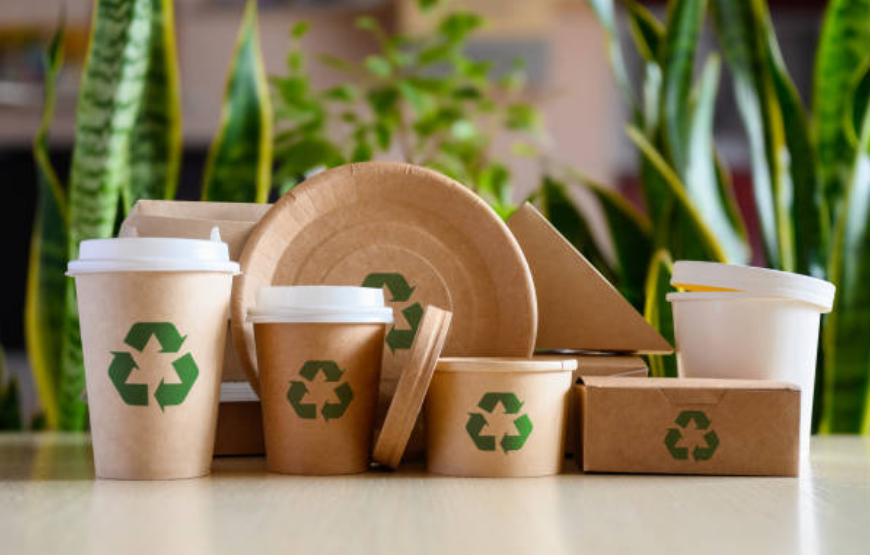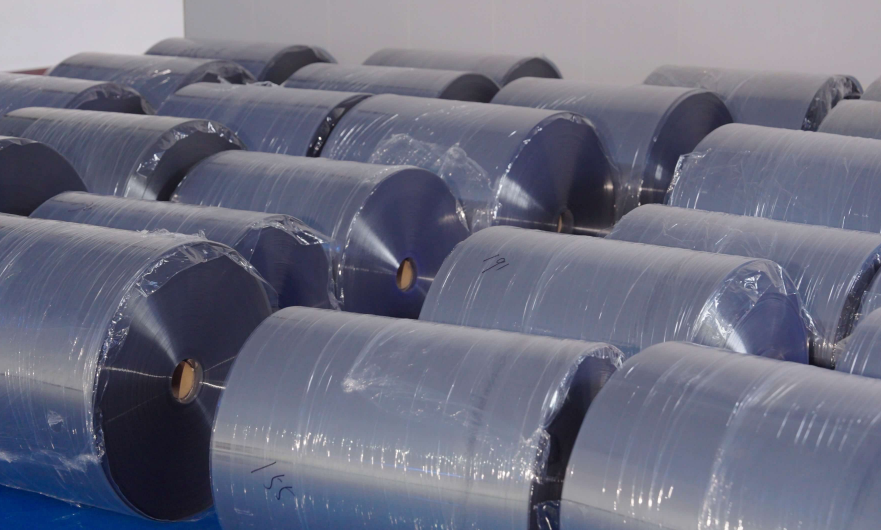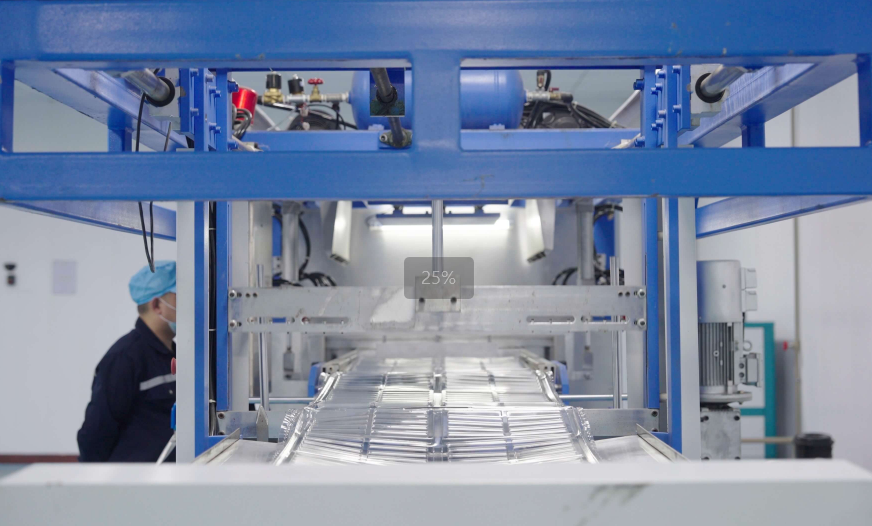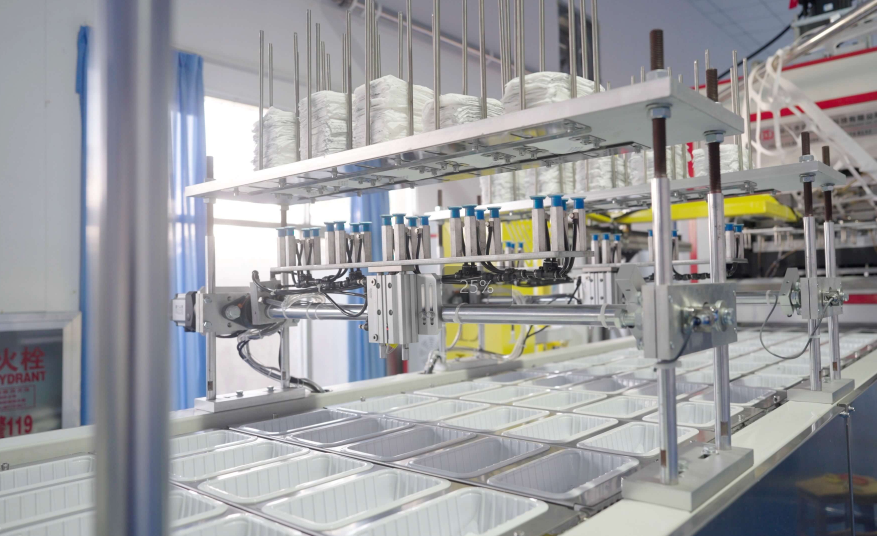Introduction to Sustainable Food Packaging Production
Sustainable food packaging aims to reduce environmental impact while maintaining product quality and safety. The process uses several key approaches to ensure packaging is both eco-friendly and functional.
Material Selection
Sustainable food packaging is about caring for the planet and looking toward the future. Picture holding something made from bioplastics—created from plants, not petroleum. It feels good to reduce our dependence on fossil fuels. Every time we use such packaging, we take a small step for a greener future.
Then there are plant-based fibers. These natural materials provide an earthy option instead of the synthetic ones we’re used to. Also, recycled paper and plastics are a great choice. By reusing what we already have, we cut down on waste and give new life to old materials.
It’s a simple action, but it’s a big move toward a more sustainable world, one package at a time.
Energy-efficient Manufacturing
To reduce the carbon footprint of food packaging, energy-efficient manufacturing is key. Some effective methods include:
- Low-temperature extrusion: This process shapes materials gently, using less energy for molding.
- Solvent-free processing: It eliminates harmful fumes, keeping the air cleaner while reducing pollution and energy use.
- Renewable energy sources: Using solar, wind, or other renewable energy cuts down on fossil fuel dependence, making the process more sustainable.
Waste Reduction
Sustainable packaging, to me, is about using every material wisely—it’s like finding value in what others might throw away. I really like how closed-loop recycling works: old materials are collected, reused, and put back into production. This gives them new life and keeps waste low. I also appreciate the thoughtful design of the packaging, which feels like an artist carefully shaping just the right amount of material. It ensures that nothing goes to waste during production. It’s a great balance that makes me feel good about both the planet and the process.
Life Cycle Assessment
When I think about life cycle assessments (LCAs), I see them as a useful tool to uncover hidden environmental costs in production. It helps us spot areas where we can make a real difference. By understanding these “hotspots,” companies can make smarter decisions to improve sustainability and reduce their impact. It’s about more than just improving processes; it’s about creating a better future.
Sustainable packaging innovations are where things get interesting. Imagine packaging made from mushrooms, seaweed, or even edible wrappers that are fully biodegradable. It’s like stepping into the future, where each material serves both a practical and environmental purpose. These innovations are opening many doors for the food packaging industry, allowing businesses to make eco-friendly choices without compromising quality.
Yes, sustainable options may cost a little more upfront—about 15-25%—but over time, they pay off. I’ve seen how these investments can save money and boost a brand’s reputation, building a loyal customer base that values sustainability. It’s a win-win worth the investment.
Key Materials for Sustainable Food Packaging
Sustainable food packaging is made from eco-friendly materials that reduce environmental impact while keeping food safe and fresh. Some of the key materials include:
Bioplastics
Bioplastics come from renewable sources like corn, sugarcane, or cellulose. They provide a better alternative to traditional plastics that harm the environment. Imagine holding a package and knowing that it can break down naturally and return to the earth safely. That’s the benefit of bioplastics—they are biodegradable and compostable, making them a cleaner and greener choice. Common types include Polylactic acid (PLA) and Polyhydroxyalkanoates (PHA).
These materials break down over time, much like leaves in the wind, reducing the growing waste in landfills. By supporting the switch to bioplastics, we are not only making a sustainable choice, but also moving towards a circular economy where resources are reused, not thrown away.
Plant-Based Materials
Imagine walking through a world where everything you touch is good for the earth. This is the power of plant-based materials, like bagasse, bamboo, seaweed, mushroom mycelium, and palm leaves. These materials are special—they come from nature and are renewable, biodegradable, and full of possibilities. I often think about how these materials are turned into everyday items, like food trays, wraps, and containers. They combine convenience with sustainability. Each time they are used, they help the planet, creating a cycle of care and renewal that just feels right.
Starch-Based Materials
I like how starch-based materials, whether from corn, potatoes, or cassava, offer a better alternative. They’re not just biodegradable; they are a real sustainable choice for single-use items like cups and cutlery that break down and return to the earth after use. Every time I toss them away, I feel like I’m connecting with nature, knowing they will break down and leave no lasting trace.
Recycled Material Processing
Recycled material processing is key to creating sustainable food packaging. It helps reduce the environmental impact of packaging materials and conserve natural resources. This process includes several steps to ensure that materials are cleaned, reshaped, and safe for reuse in packaging.
Collection and Sorting
The first step is collection and sorting. Recyclable materials are gathered from consumers and businesses and then sorted into categories like plastics, paper, glass, and metal. Sorting is necessary to process each material correctly.
Cleaning and Decontamination
Once sorted, materials go through cleaning and decontamination. Contaminants such as food residues, dirt, and non-recyclable items are removed. This usually involves washing materials with hot water and detergents, followed by a thorough rinse. This ensures the materials are safe and hygienic for reuse.
Shredding and Grinding
The cleaned materials are then shredded and ground into smaller pieces. This makes it easier to melt or reshape the materials. This step is especially important for plastics, which must be broken down into smaller pieces for the next processing phase.
Melting and Extrusion (for Plastics)
For plastics, the next step is melting and extrusion. The shredded plastic is heated and melted into a liquid, then pushed through an extrusion process to form pellets or sheets. These pellets can be reused to make new packaging materials, reducing the need for virgin plastic.
Pulping (for Paper and Cardboard)
For paper and cardboard, the process involves pulping. Recycled paper is mixed with water to create pulp, which is then cleaned, de-inked, and reformed into new packaging materials. This ensures that the fibers can be reused multiple times, cutting down on waste and conserving natural resources.
Quality Control
Quality control is a critical step in the process. Recycled materials undergo testing to ensure they meet food safety standards and performance requirements. This ensures the materials are safe for food packaging and won’t compromise the quality of the products inside.
Blending
To improve material properties and meet regulatory standards, recycled materials are often blended with virgin materials. Blending helps maintain the necessary strength, durability, and other qualities of the packaging while ensuring it meets regulations.
Innovative Production Methods
New production methods are changing how we approach sustainable food packaging. These methods reduce environmental impact and improve the functionality of packaging materials.
Bioplastic Extrusion
Bioplastic extrusion uses plant-based materials like cornstarch or sugarcane to create packaging. The process heats biopolymers, melts them, and forces them through a die to form sheets or films. This method can reduce greenhouse gas emissions by up to 80% compared to conventional plastics.
Enzymatic Processes for Biodegradable Polymers
Enzymatic processes use enzymes like lipase to produce biodegradable polymers, such as polyhydroxyalkanoates (PHAs), from renewable resources like vegetable oils. This provides an eco-friendly alternative to petroleum-based plastics.
Eco-Design Principles in Production
Eco-design principles in sustainable food packaging aim to reduce the environmental impact of packaging materials throughout their entire lifecycle. By using resources more efficiently and cutting down on waste, companies can lower their carbon footprint. Below are the key strategies to incorporate eco-design into production:
Material Reduction
A core principle is material reduction, which means designing packaging to use less material while maintaining its function. For example, companies have reduced the weight of PET bottles by 30%, cutting down on plastic without affecting the bottle’s strength.
Low-Impact Materials
Choosing low-impact materials is key to sustainable packaging. This includes using recycled materials or bio-based alternatives to lessen the environmental impact. Danone, for example, uses 30% recycled PET in its water bottles, contributing positively to the recycling economy.
By following these eco-design principles, companies can reduce both environmental and economic costs over time. Though the process may require collaboration and investment in new technologies, the long-term benefits contribute to a more sustainable future for food packaging.
Quality Control and Safety Measures
Quality control and safety measures are key to ensuring sustainable food packaging is both effective and safe. Thorough testing is necessary to check material safety and meet industry standards. This includes:
- Chemical analysis to detect harmful contaminants.
- Physical tests to measure durability and barrier qualities.
Key Quality Control Steps
To maintain high quality, these steps are essential:
- Monitoring production environments to ensure the right temperature, humidity, and cleanliness.
- Checking processes at various stages of production to maintain consistency.
- Using traceability systems to track raw materials and finished products.
- Conducting regular audits and inspections to catch any issues early.
Safety Measures
Food safety is a top concern in packaging production. The main safety measures include:
- Confirming packaging materials are food-safe to prevent harmful substances from reaching food.
- Ensuring compatibility between packaging materials and food products to avoid harmful reactions.
- Testing for chemical migration to ensure no harmful chemicals leach from packaging into food.
- Checking packaging integrity to prevent contamination during storage and transport.
Considerations for Sustainable Materials
Extra care is needed for sustainable food packaging, including:
- Ensuring recycled materials are free of harmful additives to protect consumer health.
- Checking for microplastic shedding in biodegradable materials.
- Assessing the effects of composting or recycling on material integrity to ensure safety and performance.
As new sustainable materials emerge, quality control measures must adjust. Ongoing research is vital to adapt testing to new innovations in packaging.
Challenges in Sustainable Packaging Production
Sustainable food packaging faces several challenges that slow down its widespread adoption.
High Production Costs
A major challenge is high production costs. Biodegradable and sustainable materials are often more expensive than traditional packaging. For example, bioplastics can cost 20-100% more than conventional plastics. This price gap makes it hard for companies to adopt sustainable methods without affecting their profits.
Complex Manufacturing Processes
The complexity of manufacturing sustainable packaging is also a challenge. Handling materials like bioplastics requires specialized equipment and techniques. Upgrading production lines to work with these new materials can be both costly and time-consuming, which drives up production costs.

